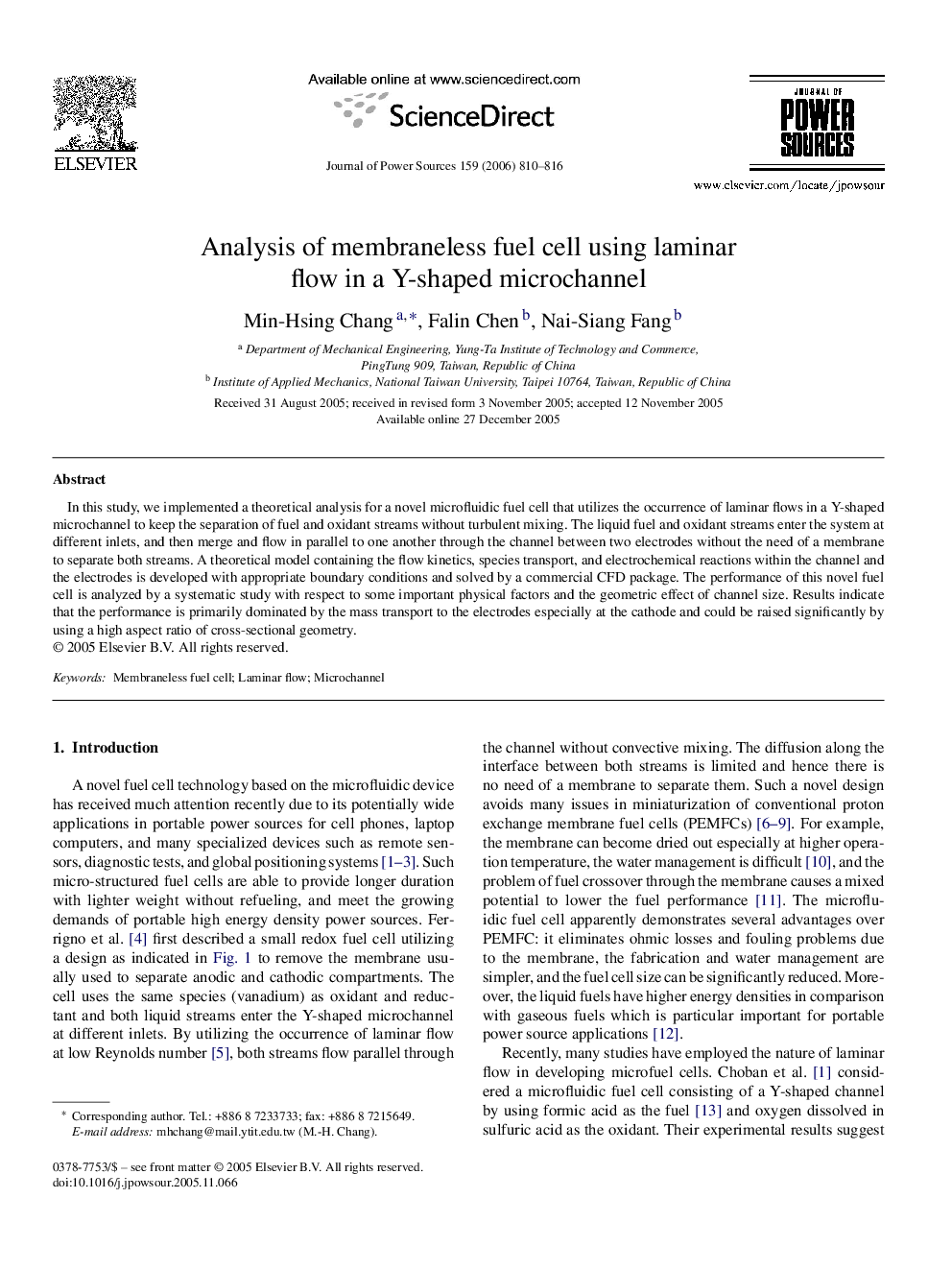| Article ID | Journal | Published Year | Pages | File Type |
|---|---|---|---|---|
| 1287229 | Journal of Power Sources | 2006 | 7 Pages |
In this study, we implemented a theoretical analysis for a novel microfluidic fuel cell that utilizes the occurrence of laminar flows in a Y-shaped microchannel to keep the separation of fuel and oxidant streams without turbulent mixing. The liquid fuel and oxidant streams enter the system at different inlets, and then merge and flow in parallel to one another through the channel between two electrodes without the need of a membrane to separate both streams. A theoretical model containing the flow kinetics, species transport, and electrochemical reactions within the channel and the electrodes is developed with appropriate boundary conditions and solved by a commercial CFD package. The performance of this novel fuel cell is analyzed by a systematic study with respect to some important physical factors and the geometric effect of channel size. Results indicate that the performance is primarily dominated by the mass transport to the electrodes especially at the cathode and could be raised significantly by using a high aspect ratio of cross-sectional geometry.
